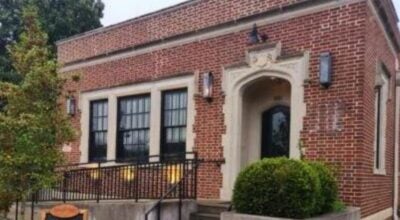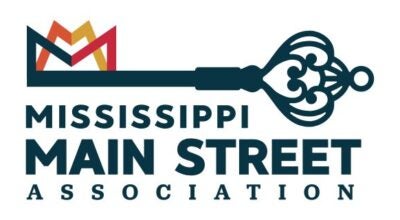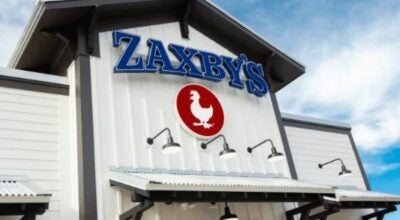Is a new interstate proposal a pipe dream or Natchez's saving grace?
Published 11:13 am Sunday, December 24, 2017
Editor’s note: This is the second installment in a four-part series about an interstate highway that is proposed to run through Natchez.
NATCHEZ — Imagine a future in which Natchez has an interstate highway running through it.
Many have called the proposed Interstate-14 coming through Natchez a pipe dream, while others see it as the city’s saving grace — but whether or not it eventually comes to fruition, the theoretical impacts a new interstate could have on the area remain.
The impacts of an interstate go both ways, with potentially both positive and negative impacts economically and culturally.
But the positives, former Natchez City Planner Phil Walker said, would likely outweigh the negatives.
Walker, who is currently one of the lead consultants on Natchez’s downtown revitalization project, has worked with numerous cities, and in one instance dealt with a city having an interstate issue.
Walker said he worked years ago with Pleasant Grove, Utah, a small city south of Salt Lake City off of Interstate 15. Though the city was located off the interstate, Walker said at the time it was built, they had elected not to construct an interchange.
“Years went by, and they would watch other communities along I-15 grow and prosper, the ones that did have interchanges on the interstate,” Walker said. “They finally realized, ‘Gee, we should have gotten an interchange.’”
Walker said the city later seized an opportunity to build an interchange, which opened in 2002. U.S. Census Bureau data shows the city’s population grew from approximately 23,500 to approximately 33,500 between 2000 and 2010.
The obvious economic benefit of an interstate, Walker said, is simple — increased traffic leads to an increased consumer base.
“When you have a lot more people traveling through your community, obviously that’s more people to stop and buy things, dine, even spend the night if there are hotels,” Walker said.
And in anticipation of that, industries could suddenly find a city more desirable.
Walker said the aspect of attracting businesses should not be overlooked, as increased access could make all the difference in recruiting industry.
“Whereas before you had a (business) that might look at Natchez and say, ‘It’s kind of hard to get to,’ once you have an interstate, that issue starts to go away.”
But all these potential benefits, Walker said, must be accompanied by careful planning.
“When you suddenly have much more market demand for real estate development — which is what an interstate will bring — it means you need to have good plans and good regulations in place so you can channel that economic energy in a positive way,” Walker said.
The importance of treading carefully is also evidenced by potential shortcomings of an interstate.
For example, often times when interstates follow an existing roadway, that roadway will at least have to be widened, creating the potential for negative impact on buildings, sensitive lands — Walker uses wetlands as an example — or other natural or archeological resources.
He points out, however, that communities might not see these impacts as big deals when comparing potential pros and cons.
“Most communities would view that as kind of a minor thing in relation to the possible economic impacts,” Walker said.
Both the benefit of an interstate highway on a small town and the need to plan carefully can be seen with a town comparable in many ways to Natchez — Natchitoches, La.
Natchitoches became more accessible after the construction of I-49 outside of the city, which came about in the 1990s.
The interstate actually bypasses approximately 4 miles west of the city’s center, but Natchitoches Community Alliance Director Tony Davis said the interstate absolutely offers a positive impact on the city.
“There’s no doubt in my mind it is a boon to us to be located on that corridor,” Davis said.
But the planning around I-49 did not end with construction — far from it.
Today, the city is still attempting to improve the ability to garner visitors. Even though the 4-mile distance between the interstate and Natchitoches is not exactly a long trek, the city has been investing in beautification projects to point travelers toward the city, lest they pass by so not to go out of their way, Davis said.
Service roads needed to improve auxiliary routes are another item that needs attention even today, Davis said.The city has successfully developed around the interchange at I-49 and Louisiana 6 with plenty of hotels and restaurants, but the issue is the proximity from Natchitoches’ downtown.
“It’s pretty heavily built out there, but it’s an island,” Davis said.
Even so, Davis said, that is a good problem to have, as all the businesses around that interchange demonstrate opportunities that would not have existed without an interstate.
“Every business that’s (located there), that entire tax base was not an option,” Davis said. “It was not available and would not have been available without Interstate-49.”
But Walker points out another challenge with interchanges, which is to avoid what he calls “Generica.”
Walker explained that most interstate interchanges tend to follow a generic architectural formula, which is that those areas tend to become dominated by chain businesses.
“The bottom line one town looks like the other when you’re at an interstate interchange,” Walker said.
The challenge then becomes maintaining a distinct identity through some other means, which he tied back to downtown revitalization and development.
All these issues underlie main points made by both Walker and Davis, in that while interstates will present their own unique challenges, the economic benefits often mitigate any potential damage to be done.
Part I: What impact would a federal highway have on Natchez, Mississippi?
Part III: Could an interstate end up dividing the Natchez community?





